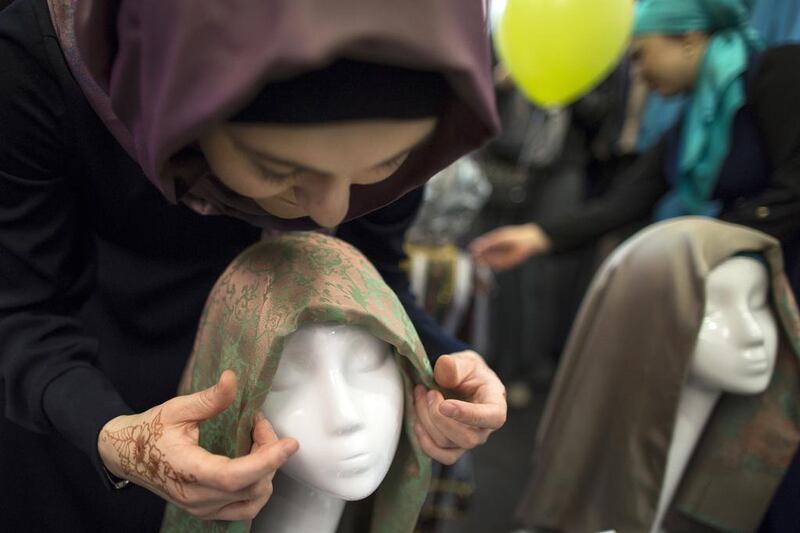My two-year-old likes to walk around the house in my high heels. She beams from ear to ear, giggling “Look, I’m mummy!” Her delight is palpable. After all, as a child, what could be better than being mummy?
This week in Britain, the department of transport – a government body – announced that it would be withdrawing a communications campaign aimed at promoting road safety for children after Muslim women complained about the fact that one of the children in the advertisement was wearing a headscarf. Indeed, four-year-old, brown-skinned Razmi was wearing a bright yellow headscarf, a red t-shirt and blue leggings. The campaign features children of other ethnicities, too, the aim being to create an inclusive teaching resource reflecting the diversity of the population. After all, road safety is a life-and-death subject, so using every communications tool possible to engage children is a must.
___________________________
More from Opinion about the veil:
[ Islamic clothing is changing the fashion world. But it will not dismantle the desire to judge women ]
[ The European hijab ban is really a victory for Muslim women ]
[ The hijab and the pitfalls of assigning lazy linguistic labels ]
___________________________
And yet, they withdrew the campaign after Muslim women complained that depicting a four-year-old in a headscarf sexualises her. They argue that even those who believe in covering would only do so on approaching puberty and that showing a child who is covered is, therefore, a way of enforcing narrow norms that dictate that girls are custodians of honour who must be hidden away and that covering is the only acceptable way to be a Muslim woman.
Forcing women or girls to cover in any way is wrong. I’m shaking my head as I write that sentence because it is such an obvious statement that I can’t even believe I am even having to state it. But here I am doing so, simply because the reasons why women and girls might wear scarves are complicated and fluid. It may be – like my daughter – just to look like mummy, who also wears a headscarf.
Here is the problem: we collectively fail to understand that there is no singular meaning to the veil. The veil means many different things, sometimes even down to individual meanings for individual women. For example, some women cover against social norms, others to adhere to state policy. It is, therefore, impossible for anyone to point to any one image and say it has a singular definitive meaning.
The failure to represent meaning, nuance and variety in what the veil represents is what leads us to espouse black-and-white positions on what women should or should not look like.
___________________________
More on the headscarf:
[ Is modest modelling an oxymoron? ]
[ Not the whole picture? Art, Islam and Feminism in America ]
[ Nike hijab stands against a wave of global prejudice ]
[ Fighting Hislam: a look at tackling sexism within Muslim communities ]
___________________________
The most obvious example of this is the depiction of the meaning of the veil in western media, which sees it as a means of enforcing control, resulting in the characterisation of veiled women as brainwashed or oppressed.
The same applies also within Muslim discourse, which far too often confines the piety and acceptability of Muslim women to what they wear.
Muslims need to ask themselves why some Muslim women feel so strongly against girls wearing headscarves. The most common explanation among Muslims is that covering keeps men's lust at bay, a line of reasoning that is offensive to both men and women.
The veil has become an obsession. One understandable reaction is, therefore, to fully reject it.
Yet any parent will tell you that sometimes, children really do know their own minds. While we may disagree with a girl's decision to cover, if she has chosen it independently, then we must respect her bodily autonomy. After all, women's rights movements are rightly focusing on teaching girls to have ownership over their own bodies.
Until we can accept that veiling has a multiplicity of meanings, we cannot reach a point where we can depict Muslim women and girls in a multiplicity of ways.
Ensuring Muslims are represented in everyday imagery is a relatively new phenomenon. Otherwise, only one Muslim stereotype is usually depicted. So while it might be a broad brush to put a female character in a headscarf, it is an understandable form of shorthand.
It also goes back to this problem of singularity. Only when we have created a public discourse of nuance, multiple meanings and diversity will we see that reflected in imagery.





